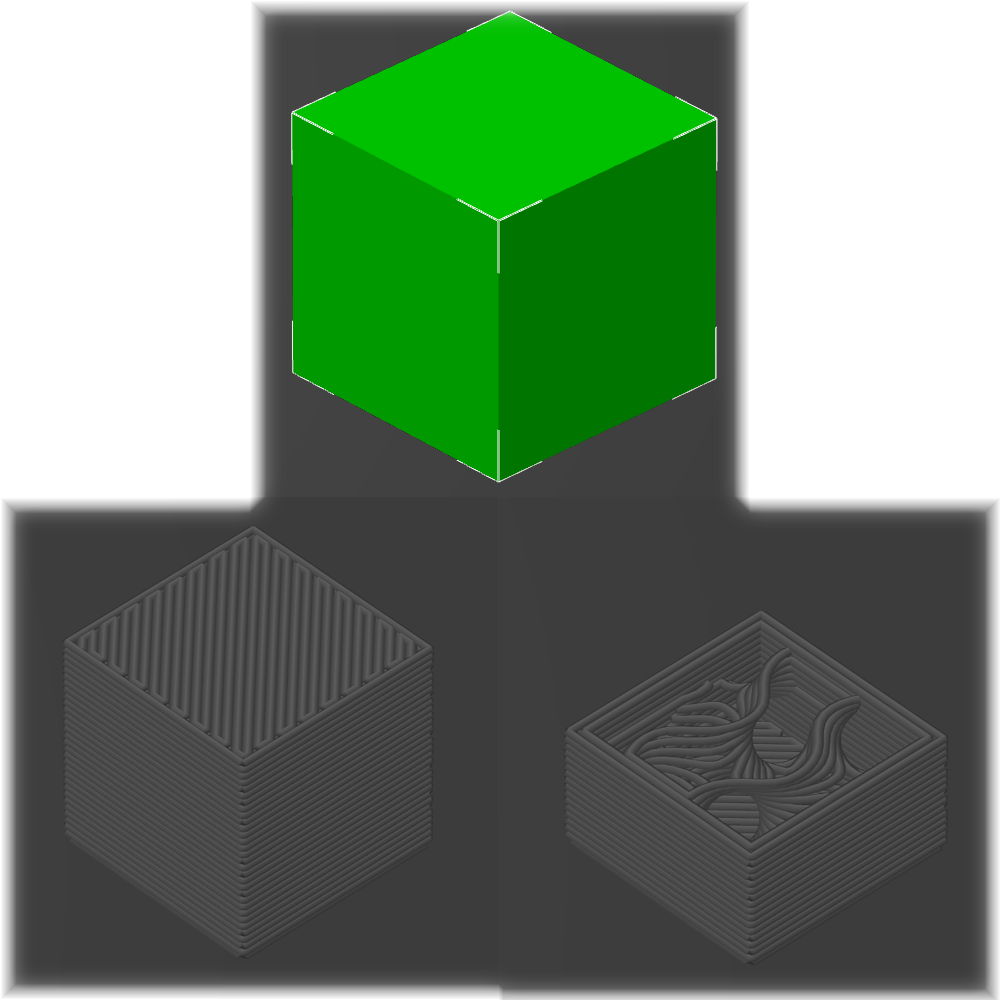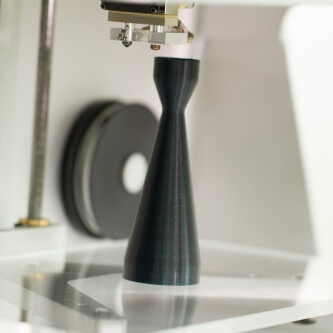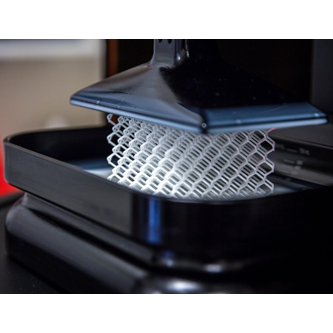It can be difficult to understand 3D printing, so we’re here to try and simplify it.
3D printing isn’t the best description for how these amazing machines function. The current preferred term is “Additive manufacturing”, moving onto something more interesting.
In the main you would buy a 3D printer for a specific task; miniature models, jewellery casting, medical equipment, dentures, engineering parts, jigs and prototypes just to mention a very small slice of the possibilities.
How does it work? Well, lets try and keep this as clear and understandable as possible.
We take a created 3d model (an STL file for instance). We slice it in our machine specific software, which slices the model into sub half a millimetre slices. These slices are then ‘printed’ by the 3D printer, one layer at a time until your model is completed. As an example a cube that is 10mm x 10mm x 10mm comprises of 100 0.1mm layers.


FDM – Fused Deposition Modelling.
FDM printers use a spool of 1.75mm filament, which is then melted and laid down in layers of 0.1 mm – 0.2mm (dependant on detail quality required)
Each layer is fused, to the layer below, as it is printed. Upon completion you are left with a solid 10mm x 10mm x 10mm cube.
The FDM printer also enables us to add strengthening fibres, such as Kevlar, carbon fibre and fibreglass to our models. This can give them tensile strength on par with aluminium. This is NOT a common appearance in 3D printing machines. Allowing the strengthening holes, weak points, leverage points etc, this is a big plus in 3D printing.
An FDM printer is ideally suited to engineering tasks, jigs, tools etc.
SLA – Stereolithography.
SLA printers work differently to FDM printers in many ways, but the main difference is the material. Where the FDM is a solid thread of plastic which is melted, an SLA printer utilises a bath full of UV curable polymer resin. Laser light is then ‘fired’ from underneath the bath, creating cured layers of 0.025mm – 0.1mm in thickness.
SLA printers are normally used for creating more detailed, and aesthetically pleasing items. Such as statues, jewellery etc. Which, for a while may have been true. With the current array of materials now available to us we can offer a much greater range of uses.
Once the models are completed they are bathed in IPA (not pale ale) to remove any excess resin, and then cured in a UV oven for 30 minutes. After this time the model is clean, and full of eye popping detail.

Is 3D printing here to stay?
Simple answer is Yes.
Nasa have used 3D printing for years, especially on the International Space Station where spare parts can be produced in hours, rather then delivered via multi million dollar payloaded rockets.
Wilson have recently released a 3D printed basketball, which can never go flat!
Bugatti 3D print brake calipers, calipers!! If they trust it to stop a Veyron, I’m in!
Researchers at Northwestern University in Chicago have even 3D printed mouse ovaries, transplanted them into 7 mice and 3 of them became pregnant.
At this point I will leave this here, and go away pondering on mice…